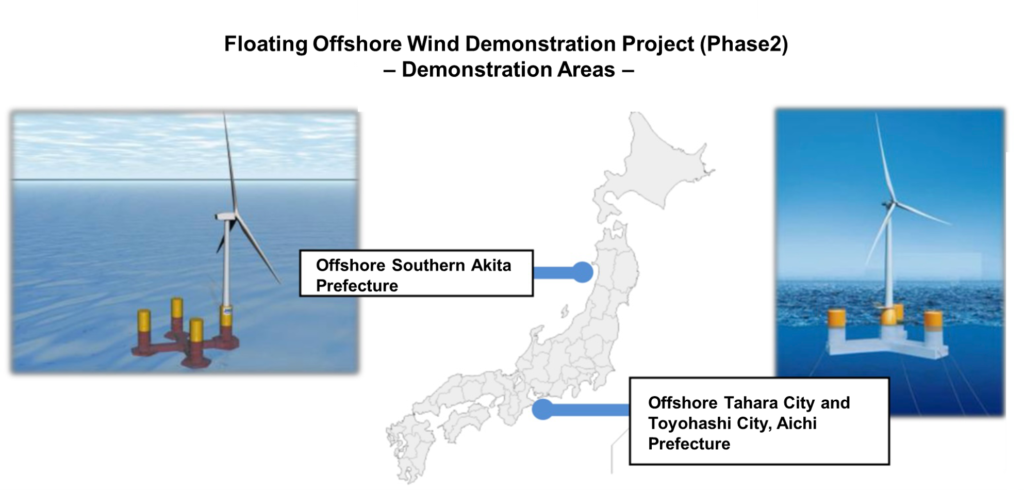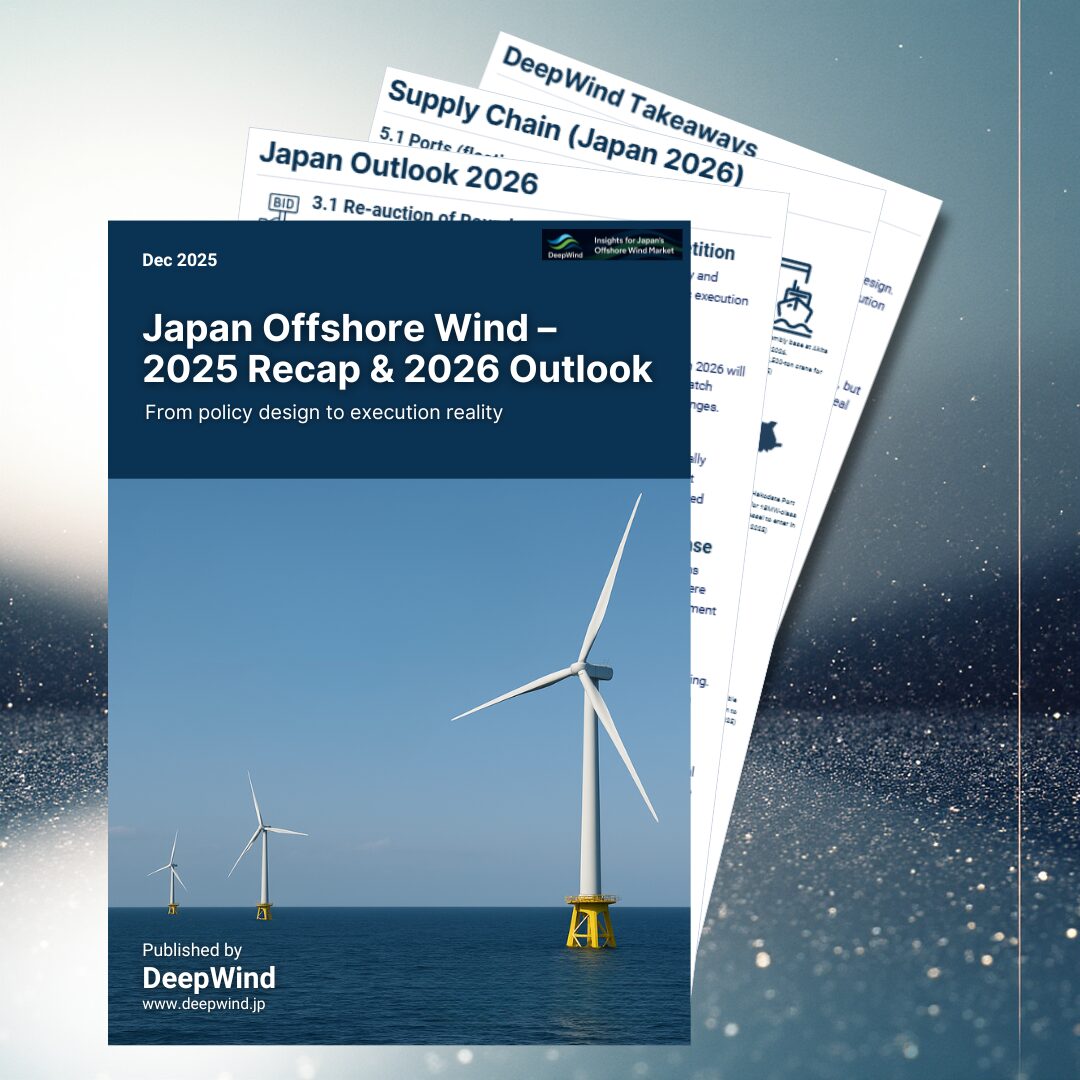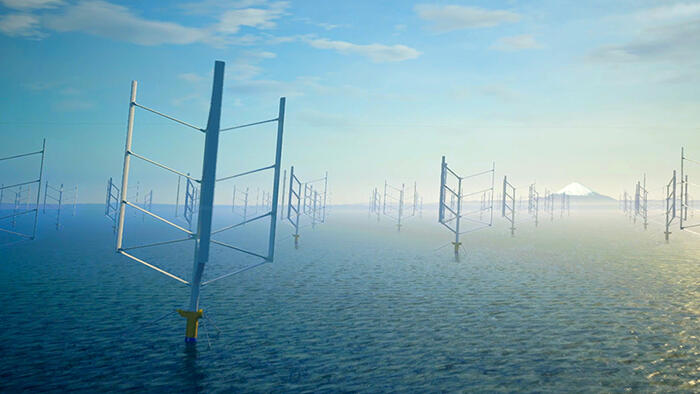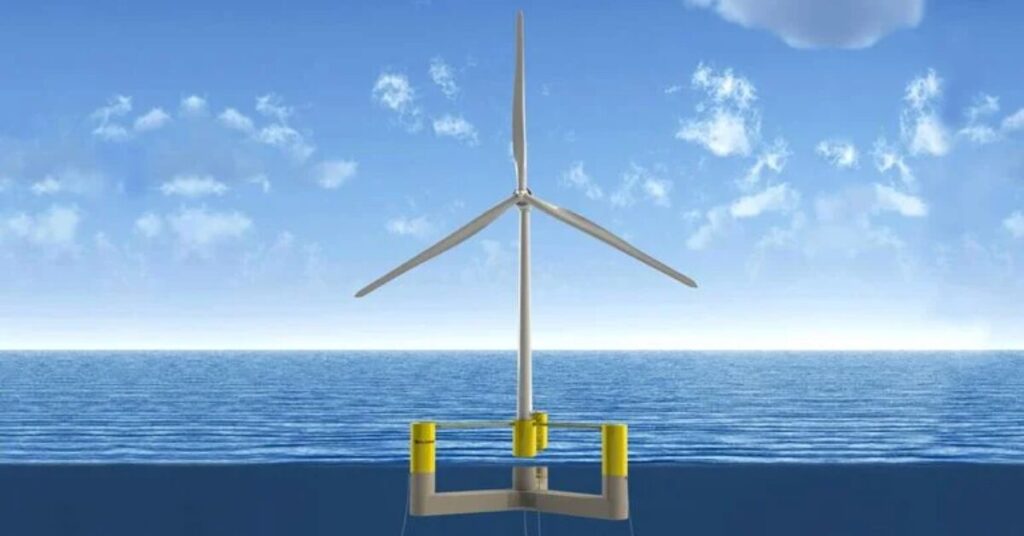Introduction
To accelerate its transition to renewable energy, Japan is investing heavily in the development of floating offshore wind power technology. As part of this effort, the Phase 2 demonstration project led by NEDO (New Energy and Industrial Technology Development Organization) aims to achieve cost competitiveness at the global level and commercial deployment by 2030. This initiative not only strengthens Japan’s energy security but also positions the country to take a leadership role in the global offshore wind market.
In this article, we explore the objectives, key demonstration projects, and innovative technologies behind Phase 2, and examine how they fit into Japan’s broader green energy strategy.
This article takes a deep dive into this specific topic, but if you’re looking for a comprehensive overview of offshore wind technologies, check out our full summary article here:
👉 Offshore Wind Technology 2025: Foundations, Floating Wind, Turbines, and Innovations
1. Phase 2: Advancing Floating Offshore Wind Technology
Building on the achievements of Phase 1, Phase 2 introduces technical innovations to enable large-scale deployment and further reduce costs. The focus is on practical implementation and scalability.
1-1. Improving Cost Efficiency
- Simplified floating foundation designs to reduce construction and installation costs
- Streamlined manufacturing processes to shorten the production cycle (takt time) for large turbines
1-2. Enabling Large-Scale Deployment
- Utilization of turbines rated over 10MW, capable of supplying more power with fewer units
- Preparation for integration into next-generation power grids, accommodating larger volumes of renewable electricity
2. Project Highlights: Japan’s Key Demonstration Sites
Two major demonstration projects are currently underway, both featuring cutting-edge 15MW-class turbines. These projects represent a significant leap toward commercial-scale deployment.
2-1. Offshore Akita (Southern Coast Area)
- Lead developer: Marubeni Offshore Wind Development and others
- Plan: Install two 15MW+ turbines using semi-submersible floating foundations
- Focus: Validate performance and installation under real sea conditions in the Sea of Japan
2-2. Offshore Aichi (Tahara & Toyohashi Cities)
- Lead developer: C-tech and others
- Plan: Install one 15MW+ turbine on a semi-submersible foundation
- Focus: Evaluate viability under Pacific Ocean wave conditions—an essential testbed for future deployments
3. Driving Innovation Toward Commercialization
The Phase 2 initiative is distinguished by the adoption of advanced technologies aimed at addressing both cost and reliability challenges, paving the way for real-world commercialization.
3-1. Development of Next-Generation Turbines
- High-efficiency, high-durability turbines designed for Japan’s harsh ocean environment
- Use of corrosion-resistant materials and modular architecture to extend lifespan and simplify maintenance
3-2. Optimization of Floating Foundations
- Modular design and standardized components to improve manufacturability
- Adoption of advanced materials for lightweight, high-strength structures
3-3. Enhancing Offshore Transmission Infrastructure
- Testing of high-voltage direct current (HVDC) systems to support long-distance power transmission
- Deployment of lightweight submarine cables optimized for deepwater installations
3-4. Automation of O&M (Operations and Maintenance)
- Use of AI- and IoT-powered monitoring systems for real-time diagnostics
- Introduction of automated drones and underwater robots for maintenance and inspection tasks
Conclusion: The Future of Floating Offshore Wind in Japan
Floating offshore wind power represents a key pillar of Japan’s energy transition, especially given the country’s deep coastal waters. Through the Phase 2 demonstration, a robust foundation is being laid for full-scale commercialization by 2030, focusing on cost competitiveness, scalability, and technology innovation.
If successful, Japan will not only meet its domestic energy needs but also shape global offshore wind standards. With strong industry partnerships and ambitious policy support, Japan is poised to become a trailblazer in floating wind, contributing meaningfully to a sustainable energy future worldwide.
For a broader look at offshore wind technologies and future innovations, make sure to explore our comprehensive summary article:
🌊 Offshore Wind Technology 2025: Foundations, Floating Wind, Turbines, and Innovations
Explore more categories at DeepWind:
- 🔍Market Insights – Understand the latest trends and key topics in Japan’s offshore wind market
- 🏛️Policy & Regulations – Explore Japan’s legal frameworks, auction systems, and designated promotion zones.
- 🌊Projects – Get an overview of offshore wind projects across Japan’s coastal regions.
- 🛠️Technology & Innovation – Discover the latest technologies and innovations shaping Japan’s offshore wind sector.
- 💡Cost Analysis – Dive into Japan-specific LCOE insights and offshore wind cost structures.



